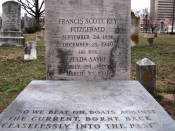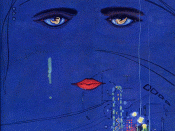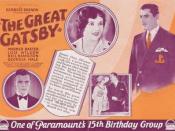The Fall of American DreamsF. Scott Fitzgerald wrote the novel The Great Gatsby in 1925, at this time America was still young and growing so everyone was creating new lives. Gatsby attempts to live out the American dream in the 1920's, which is what many people attempts to achieve in doing so, Nick sees that Gatsby becomes corrupt. F. Scott Fitzgerald shows a great deal in the decline of moral culture in the novel The Great Gatsby. Throughout the story, we see the downfall of the ideal image of the American Dream during the 1920's. Symbolism in Doctor T.J. Eckleburg, Valley of Ashes, the green light and money to shows that the theme that the great United States no longer exists.
The use of symbolism comes into effect many times within the novel The Great Gatsby. The eyes of Dr. T.J. Eckleburg play an important role in the novel numerous times.
Every time that Dr. T.J. Eckleburg is mentioned, there is a moral conflict with a character in the valley of ashes. The billboard represents that the eyes of God and that he sees everything that happens even in the valley of ashes. The readers are first shown of this giant billboard when Tom and Nick go into town to see Myrtle, who is the woman that Tom is cheating on his wife Daisy, with. The eyes gazing down shows the lack of moral belief and respect that comes in being unfaithful with his wife. The bill board of Dr. T.J. Eckleburg reappeared when George is talking to Myrtle. "God knows what you've been doing, everything you've been doing. You may fool me, but you can't fool God!" (page. 152) George believes that the billboard is God, looking down upon the valley of ashes, seeing everything. With all the events...


